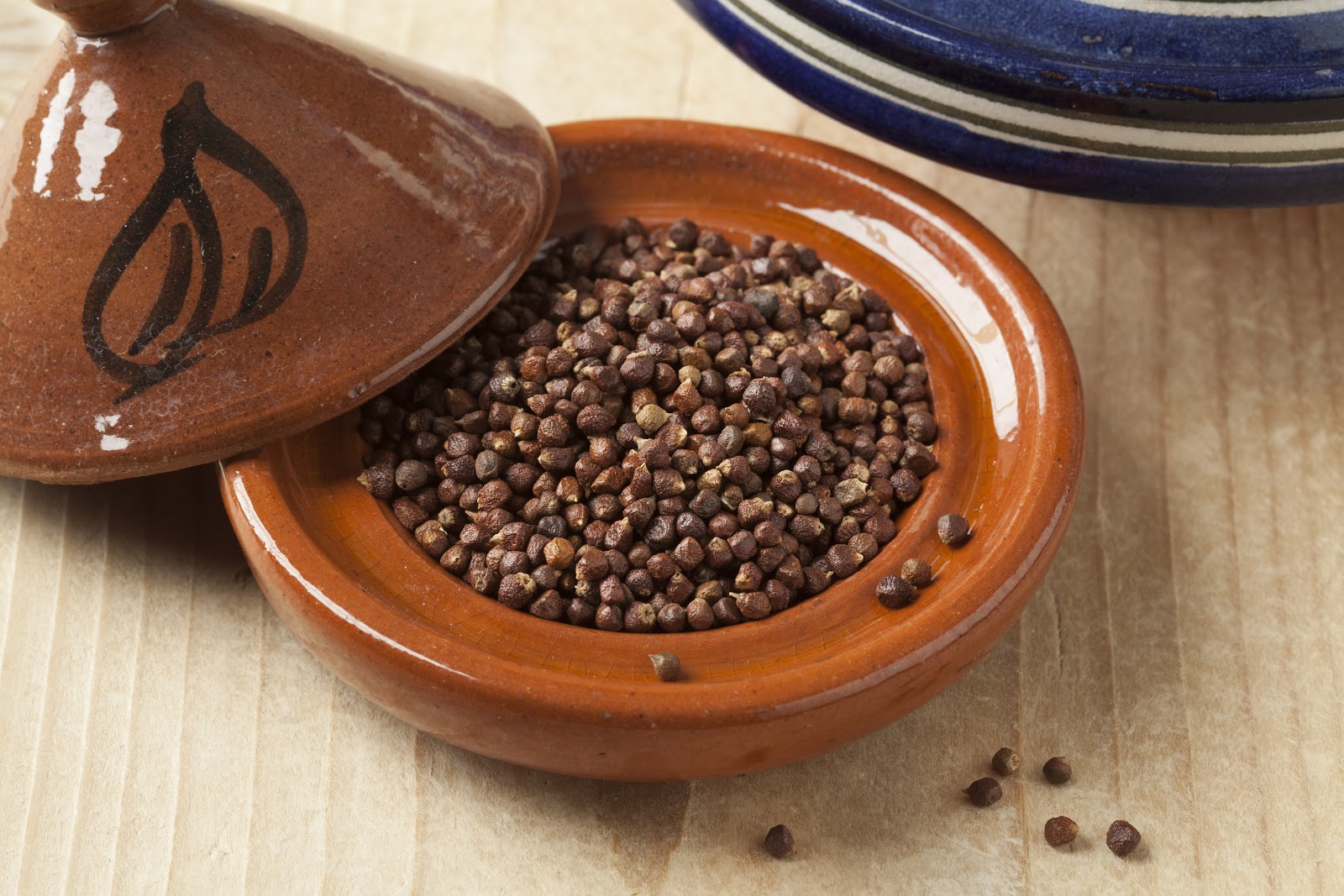What are Grains of Paradise?
Grains of Paradise (Aframomum melegueta), also known as the melegueta pepper, is a member of the ginger and turmeric family. It has a taste reminiscent of black peppers but with a little bit of citrusy touch. This aromatic plant will bear pods that start off green before becoming red, signaling that it is now ready for harvest. Once harvested, the red pods are dried for about one week before it is opened to reveal the thousands of golden red-brown seeds that can now be used as a spice, either grounded or whole.
Origin
Grains of Paradise originated from West Africa, with Ghana as its largest producer and exporter. It used to be a popular spice even in European countries when camel caravans reached Sicily and parts of Italy. The caravans introduced the spice as African pepper, but Europeans renamed it to its current name, “Grains of Paradise”. It was a spice of choice until the 19th century, until more accessible substitutes became available, like black pepper and nutmeg. The spice, however, continues to prove its worth as a subtler but more complex substitute to cardamom, ginger, and citrus in West Africa and in some areas of North Africa.
Flavor Profile
This spice looks like black pepper but gives a lighter punch in comparison. It is not as sharp-tasting as its counterparts but the earthy, warm taste, with a hint of cardamom and citrus, is what people look for when using Grains of Paradise. It also has a somewhat bitter aftertaste, something unique to the spice.

Cooking with Grains of Paradise
Grains of Paradise is commonly used as a spice blend ingredient, the more famous of which being the Ras El Hanout, a favored spice blend in the Mediterranean area. As it has a bitter aftertaste, this spice has also become a famous ingredient for craft beers, and a flavoring for ale and gin. It is also a good addition to marinades for fish and vegetable dishes or rubbed into meat for roasting like steaks and kebabs. To some extent, it can also be used in green salads and fruit desserts. It can also be an ingredient to brines and soups, adding the spice towards the end of the cooking process.
Nutrition
In a serving size of 5 grams, and based on a 2000 daily calorie count, the Grains of Paradise contains 0% carbs and 0% protein, with a 5kcal count. It also contains 2% calcium and has 19mg sodium.
Health Benefits
Like many other herbal products, this spice holds a lot of health benefits to it. Some of which are:
Treats gastrointestinal problems. It has been found that regular use of the spice helps in easing stomach pains, ulcers, diarrhea, and even help eliminate intestinal worms.
Treatment of wounds. Due to its considerable high tannin content, it is also used as an ingredient in home blends for wound treatment. The stringent property of tannin helps it become a good disinfectant and healing aide to burns and other inflammations.
Anti-oxidant. Just like many herbal products, the Grains of Paradise also boast high levels of anti-oxidizing properties that help protect a person from viruses, as well as aide in the release of toxins from the body.
Antimicrobial properties. This spice contains phenolic compounds – something that is also used in the creation of disinfectants. Studies have found that it can inhibit the growth of common bacteria like Staphylococcus aureus, Salmonella, etc.
Pain relief. It is a great way to help combat joint pain like arthritis, toothache, and stomachache. This is because the seeds and the plant extracts have analgesic components that aide in the alleviation of almost all types of body pain.
Helps lessen scars. When one is hit with diseases like measles and chickenpox, there is always the fear that scars would be left behind. The Grains of Paradise is an herb and a spice that can help in treating these infectious diseases as well as provide dermatological care so as the wounds do not become deep scars.
Aphrodisiac. This spice has been revealed to increase sexual desires, making it a perfect final touch to those date night dinners at home with a loved one.
Proper Care and Storage
While it is normally included as a powdered ingredient, it can also be used whole or just pounded and smashed. Hence, it is best to keep separate jars for the whole seeds and for the grounded spice. Both kinds should be kept at room temperature and in an airtight container.




